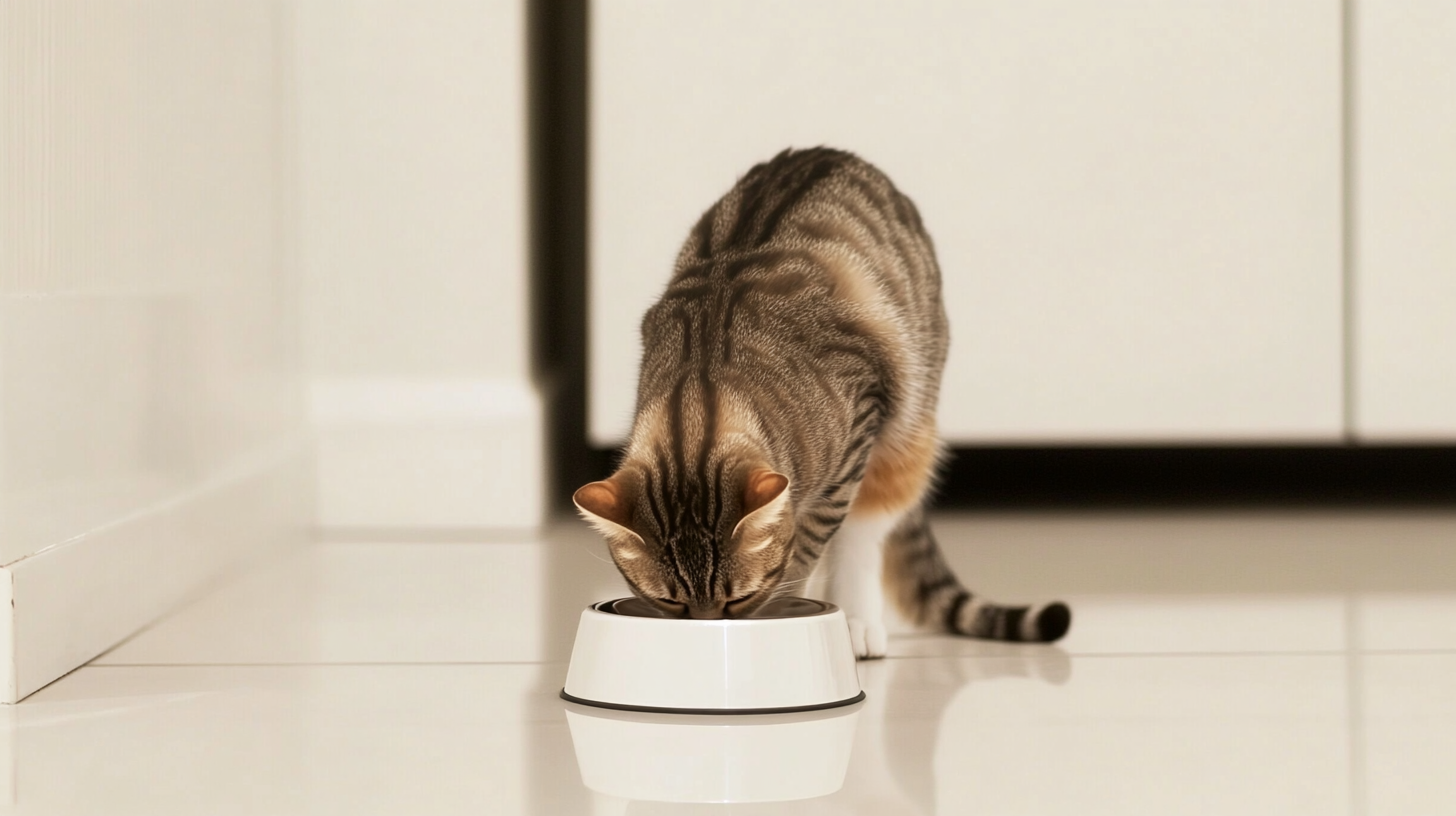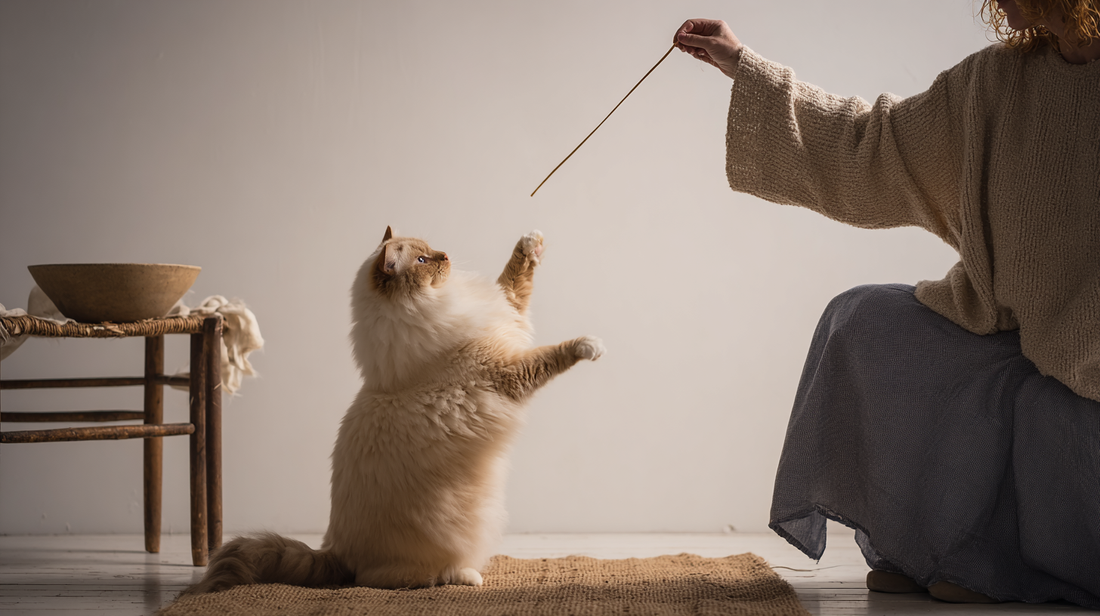Most cat owners face the daily challenge of their feline companions turning up their noses at perfectly good food. This widespread struggle with finicky eaters affects countless pet parents who simply want to ensure their cats receive proper nutrition.
One key, often overlooked, factor in feline nutrition is palatability – how appealing a food is to your cat. Palatability is influenced by a variety of factors, including taste, aroma, texture, and even the shape of the food. Among the various elements affecting palatability, glycine, a simple yet significant amino acid, plays an important role in enhancing food or liquid acceptance in cats.
This blog post aims to educate you, the dedicated pet owner, about glycine and its potential to transform mealtime from a daily struggle into a satisfying experience for both you and your feline companion.
Summary
Understanding glycine: The fundamental amino acid
Glycine is a non-essential amino acid, meaning that cats' bodies can synthesize it, and it does not need to be exclusively sourced from their diet]. It's the simplest amino acid, and it plays several important roles in the bodyGlycine is a building block of proteins and is involved in various metabolic processes You'll find glycine naturally occurring in many protein-rich foods
The importance of palatability in feline nutrition
Cats are notorious for being picky eaters, a trait that can be both amusing and frustrating. However, this selectivity isn't just about being difficult; it's rooted in their physiology and evolutionary history. Unlike some other animals, cats have fewer taste receptors, making them more sensitive to certain flavors and textures. A cat's aversion to food can lead to poor food intake, potentially causing various health issues.
A balanced diet is essential for your cat's overall health. Insufficient intake of necessary nutrients can lead to weight loss, muscle loss, and a weakened immune system. Moreover, palatability is directly linked to hydration, particularly for cats consuming dry kibble diets.
Dry food contains significantly less moisture than wet food, and if your cat isn't enthusiastic about eating, they may not consume enough water, potentially leading to dehydration and urinary issues. According to Zanghi (2017), water makes up between 52% and 67% of a cat's body weight. Therefore, encouraging them to drink palatable liquid helps ensure they receive adequate hydration.
Glycine's role in enhancing food and water flavor for cats
Amino acids, including glycine, are not just building blocks for proteins; they also contribute significantly to the taste and aroma of food and water. Cats can detect and are influenced by these subtle flavor compounds. Glycine, in general, is associated with enhancing sweetness and overall flavor in food or water.
Cats do not have sweet taste receptors, therefore glycine takes the role of reducing bitterness, making food more palatable for cats. A more appealing flavor profile can encourage your cat to eat or drink more, ensuring they receive the necessary nutrients and hydration.
A study investigated the effects of nutrient-enriched water (NW) on water intake in cats fed a dry kibble diet. The nutrient-enriched water contained various nutrients, including amino acids. The results of this study suggested that consumption of the NW can increase liquid intake and improve measures of hydration in healthy cats.
While this study focused on water, it highlights the potential of supplementing with nutrients like amino acids to improve consumption and hydration in cats. The increase in liquid drinking in cats that consumed NW was likely attributed to whey protein and glycerol, as well as poultry flavor.
Practical strategies to add glycine to your cat's diet
One of the most straightforward ways to incorporate glycine into your cat's diet is by choosing the right cat food. Look for cat foods that list glycine or glycine-rich ingredients. Ingredients such as hydrolyzed protein and animal digests are often good sources of glycine. Reading the ingredient list can provide valuable insights into the amino acid content of the food.
Supplementation with glycine is another option, but you can discuss it with your veterinarian. Glycine supplements might be beneficial in specific situations, such as encouraging a sick or elderly cat to eat. Your veterinarian can provide guidance on appropriate dosages and potential interactions with other medications.
Another strategy is to add DIY flavor enhancers to your cat's food, but this should be done with caution. Some cat owners have found success using safe, glycine-rich food toppers like bone broth. However, it's essential to avoid toxic ingredients such as onions, garlic, and excessive salt.
Maintaining a balanced diet is crucial, so toppers should only be used as occasional enhancements rather than as a replacement for nutritionally complete cat food.

Common myths about feline food preferences
There are several common misconceptions about why cats are picky eaters. One myth is that cats are simply being spoiled or manipulative. In reality, their eating habits are often driven by their unique physiology and nutritional needs.
Another misconception is that if a cat is hungry enough, it will eventually eat whatever is offered. While this might be true to some extent, forcing your cat to eat unpalatable food can lead to stress, aversion, and potentially health issues.
Understanding palatability isn't just about "spoiling" your cat; it's about meeting their nutritional needs in a way that aligns with their natural preferences. By focusing on palatable options, you're more likely to ensure your cat receives a balanced diet, stays hydrated, and maintains overall health and well-being. The goal is to ensure your cat eats a nutritionally adequate amount of food.
Conclusion: Improving your cat's mealtime experience with glycine
Glycine offers significant benefits in enhancing palatability for cats. By understanding its role in flavor enhancement and incorporating it into your cat's diet through informed food choices, you can transform meal times and improve your cat's overall health and well-being.
Consult with a veterinarian if you want personalized dietary advice tailored to your cat's specific needs and health status. Next time you're choosing cat food or drink, take a closer look at the ingredient list for glycine! By understanding your cat's nutritional needs, you are better equipped to make informed choices to benefit their health and well-being.
The information in this article is based on the following scientific publications:
Alipourmazandarani, N. (2024). Water consumption of cats Felis catus.
Nealon, N.J., Summers, S., Quimby, J. & Winston, J.A. (2024). Untargeted metabolomic profiling of serum from client‑owned cats with early and late‑stage chronic kidney disease.
Van der Meer, S. (2021). The Water Metabolism of the Cat and Its Relation to Nutrition and Health Problems. Ghent University.
Zanghi, B., Gerheart, L. and Gardner, C.L. (2018). Effects of a nutrient-enriched water on water intake and indices of hydration in healthy domestic cats fed a dry kibble diet. American journal of veterinary research, 79(7), pp.733-744.
Looking for a solution? Start here
Stylla Hydration for cats
Supports optimal hydration with amino acid-based formulation
- Encourages drinking with amino acid flavour enhancers
- Supports urinary health through increased water intake
- Promotes kidney function with specialised ingredients
Made in Switzerland with strict quality standards





